Airborne Sting 3:168
Note to the reader; this article has been written during my flying hours of 25-75 hours of air-time. I now consider myself a true intermediate pilot. I clip in at 105 kg (230 lbs). Previous to this, most of my flying hours had been clocked up on both an Airwave Calypso and an Aeros Target 16. This was a combination of inland hill and static winching.
The Glider
The glider, top surface, leading edge and front panel of the under surface are white. 2 more strips on the under surface, coloured red and black complement the colour scheme perfectly. The batten pockets are black, a trademark of all AirBorne gliders?
The glider is equipped with VG (something new for me to play with), aerofoil uprights and king post. The base bar on my glider is round so I didn't need to purchase expensive wheels (wheels are compulsory for static winching). Aerofoil base bar options are available in aluminium and carbon composite (you pay more of course!).
The base bar is secured using pip pins at each end. This is very clean and simple, however, it was noted that after removing the base-bar (for packing) and re-securing the pip-pins that hold the side-wires in place, it's possible for the pip-pins to fall out along with the metal sheath that houses them. A pip-pin cap would be a nice touch here, however; please note: when fully assembled, this is all very secure!
I had only noticed after I moved on from my Sting 3, but the control bar is notably longer than other gliders making the A-frame feel more open/wider.
Rigging
This glider is easy to rig. Simply assemble the A-frame, rotate the glider so it sits on the control frame, raise the king post, attach the luff lines, spread the wings and start slotting in the battens. My particular favourite are the battens, gone are the days of using bungees! These plastic clips are simple, secure and very effective! Although it didn't happen, I'm sure over time I'm going to lose one or two of the plastic clips, but AirBorne have considered this and the glider comes with 4 spares - just in case (Edit: 5 years on I've not lost a single one!).
The glider is easily tensioned (just make sure the VG is off!) and is secured using a shackle and quick clip on the keel. Once tensioned, the rear top-wire is attached and finally the nose wire is attached to the nose quick clip (I did struggle with this as the nose wires are quite tight - moving the nose of the glider around certainly helps!).
To my surprise, this glider doesn't have dive sticks (washout struts). Stability in this area is achieved using additional reflex lines. This again makes for easier/quick assembly.
Short-Packing
Compared to the Aeros Target, the normal pack up length is a little longer (question the 5.7m published on AirBorne's website). For me this means short packing the glider to squeeze into my garage. Short packing was straight forward and just a case of removing the ends of the leading edges and folding the sail back on itself. Some extra padding to protect the sail would have been a nice touch here, but some careful use of bubble wrap and the tip-bags works just as well.
Ground Handling
The side wires are pretty slack when the VG is off. This made ground handling a little different to what I'm used to with the Aeros Target but I was soon able to get used to it. In a moderate breeze the Sting is easily ground handled (gone are the nose up tendencies I used to experience on the Target) and despite its wing area, the glider feels much smaller.
Take-Off
Hill
Hill flying is my main launching discipline. My first hill launch on the Sting broke all the golden rules, a new site, new glider and strong conditions! However, that said, the glider launched perfectly. Compared to the Target, in a fresh wind, the Sting doesn't nose up and is pretty easy to control and with this regard, is sooo much better than the Target! On light to nil winds, the slack side wares took a little bit of getting used to, but this is easily remedied as soon as the glider starts accelerating as you run down the hill. As the glider floats above you, it's easy to pull the bar in to keep the glider on the ground allowing for increased airspeed before take-off. Actual lift off comes very easily, as the glider will eventually lift you off the ground. Everything is what I'd expect for a glider of this class; predictable and forgiving.
Winch
Static winching (foot launching) the Sting and I have to say, this glider is a little gem. Before the winching commences, the side wires are slack (in nil wind) and the wings tends to rock back and forth above your head. Initially I found this a little disconcerting, however, once I got used to this it wasn't a problem. As the tow line begins to pull you forward, the Sting very quickly floats up as the wings generate lift. It's easy to pull the uprights in to allow a safe airspeed to build before leaving the ground and to keep good directional control. In flight on tow, the glider is easily nudged to keep it on target, my first static winching on the Sting felt very natural and in slightly thermic conditions, handled just the same or if not better than the Target.
Aerotow
All my Aerotows on the Sting have been trolley launches. In the UK, this is now mandatory due to the aspect ratio of the glider. However, before this regulation was introduced, I had been launched from the trolley using both, single attachment point from the shoulders (now not permitted), and more recently, the 50:50 bridle, (now mandatory). In both configurations, my Aerotow experiences have been a struggle due to excessive bar pressure. I used high VG settings to compensate and with the 50:50 bridle, have moved the top tow point around 8 inches forward of the top the A-frame to compensate. This meant the inclusion of an additional zipper to give me access to the keel at this location. The issue I have is maintaining vertical alignment with the tug. The Sting is quite a floaty glider and with the towing speeds of the tug, the Sting has a tendency to climb above it. Horizontal control is easy and only requires small nudges to keep it aligned with the tug. I will confess to being a little disappointed with the Sting with this respect, as one of the motivations for its design was for easier Aerotowing! Perhaps the tugs we have in the UK fly a little too fast!
Flying
My flights were with the VG off. I have to agree with what everyone has said so far about the Sting; it handles beautifully. I found it turned best when a little speed is applied, followed by weight shift and easing the bar out. It also happily turns, if not a little bit more sluggish when flying close to stall - as expected then! Compared to the Target the Sting felt solid - I think the billow on the Target dampens some of the glider's feedback; I felt very confident on the Sting.
360ing the glider in some broken thermals and the glider felt very natural. I even let the bar go (well I held it gently) just to see what the glider does in a bank; it sat there quite comfortably. The glider does need a proper weight shift (not a sloppy twist or push of the legs to one side) to come out of a turn, but that's my technique again, there were no surprises with the glider.
Sink rate 'felt' excellent, the glider just didn't want to come down! Okay, I clipped in at 105 kg on the Target (5 kg over maximum), but on the Sting 3:168, pretty much smack in the middle of its weight range. Pulling the bar in you can feel and hear the glider accelerate, on easing the bar back out I was surprised to find the glider climbing again (I initially mistook the beeps from the vario as lift!); energy retention was almost non-existent on the Target!
Gone are the days of stuffing the bar to get down; brain acknowledges this and takes this into account on setting up landing approaches!
Landing
This glider definitely glides much further than the Target, even with VG off! Once down into ground effect, this glider happily floats along. The flare point is probably a little harder to find than the Target's, but still it's a very easy to land glider - let me say that again, it's a very easy to land glider! I don't know how AirBorne have managed it, but they have! All my first landings on this glider were on my feet - if not requiring a little run off on some (more practice required).
In light winds I have every confidence in the glider and my ability to land it, even with quite a bit of VG on, it's predictable and has a wide flare window; although I would recommend landing with VG fully off. If you are the type of person that prefers to run off a landing, the Sting 3 quite happily floats along while you run off the excessive speed. For no steppers, provided you land directly into wind and have a strong positive flare, the Sting will decelerate quickly making a no stepper look pretty easy, however, as you deviate from the true wind direction, you will be punished with a dropping wing and an inevitable whack!
AirBorne
I must add a few words about the manufacturer or specifically, my one gripe with them! AirBorne's website looks lovely and has over the years gone through some iterations; however try finding the manual for the Sting 3:168! Over 5 years since its release and they still have a draft manual published on their website and the Sting 3:168 doesn't exist! Fortunately, my glider came with a paper manual. AirBorne, if you're reading - you're behind the competition!
Conclusion
In a positive way, I found the transition from the Target to the Sting 3:168 a non-event. By that I mean all the stress and anxiety I was expecting was unwarranted, I took to this glider with ease and felt very comfortable on it. I don't think this glider is suitable for the very low air-time pilot, but for pilots with solid skills the Sting is a fantastic glider. My only minor annoyance is the attachment of the nose wires, it's a bit of a fiddle - but I'm sure there's a technique (4 years on, it's loosened up and is much easier). My only disappointment with the Sting, and there really is only the one, is its suitability for Aerotow. In my personal opinion, although it will Aerotow, it really doesn't feel like it was designed for this purpose! All in all, the Sting 3 is a great all-round glider! It's a real shame that in recent years (2010-2014); the strength of the Australian dollar has effectively made AirBorne gliders unaffordable in the UK.
[Update] AirBorne, like many other hang gliding manufacturers over the years, have sadly ceased trading. This is a real shame as I loved my Sting when I owned it. I'm advised spares can still be sourced, but overtime, this is likely to become increasingly difficult.
Here's a foud memory of one of my short XCs on AirBorne's Sting 3:168.
Update History:


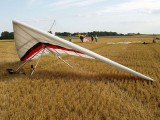
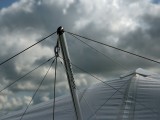
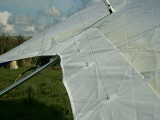
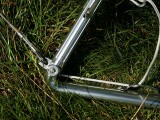
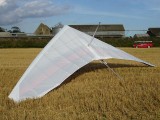
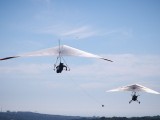

WindyWinchingAndALittleXC.jpg)